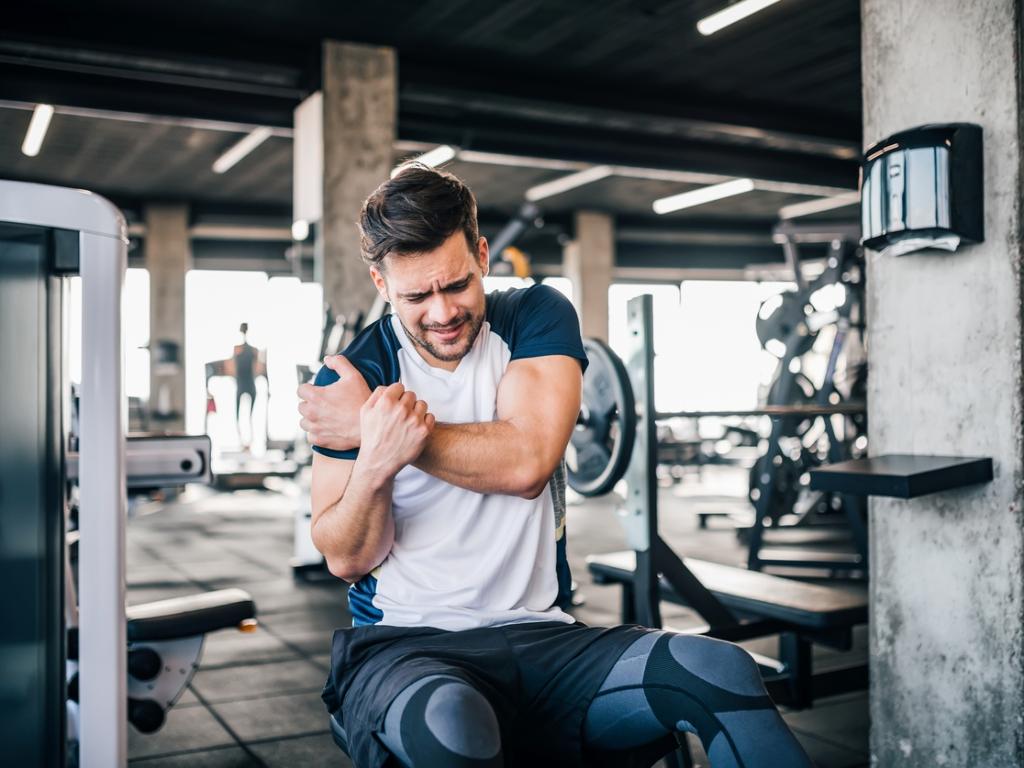
The gym is the most popular type of sports in the modern world.
However, its attendance with the wrong approach can cause significant harm to human health.
Many people who want to quickly adjust their figure and build muscle, from the gym to the office of the traumatologist or surgeon. U.S. researchers have compiled statistics on what injuries and why young people between the ages of 25 and 35 go to the doctor. The main reasons were ignorance or failure to follow safety procedures and the wrong approach to exercise.
The most common injuries were:
- torso, 28%;
- hips – 24%;
- arms – 15%;
- legs, 13%;
- head, 11%;
- arms – 5%;
- legs – 4%.

The most frequent types of injuries:
- muscle and ligament sprains – 52%;
- soft tissue injuries (contusions) – 16%;
- Cracks, fractures and dislocations of bones and joints – 10%;
- Muscle and ligament tears – 7%;
- Concussion of brain – 0,2%, etc.
The most common causes of injuries:
- fall of a heavy projectile – 66%;
- overstrain – 9%;
- falling between weights or suspended weights – 9%;
- Self-injury – 8%;
- improper lifting of heavy weights – 5%;
- Fall or loss of balance – 3%.
Specialists say that before you start strength training at the gym, you should familiarize yourself with all safety rules, and in case of the slightest doubt or ignorance seek advice from the trainers on duty at almost every gym.
How to avoid injuries at the gym?
The first and obligatory step for every athlete, whether he is a beginner or a professional, is to check his health. Most gyms, which value the health of their clients and their reputation, require a certificate from a clinic or their medical office when admitting a person to training, confirming the readiness of a person for a strong and regular exertion.
Do not neglect this requirement, because injuries and health problems are easier to prevent than to treat their consequences.
One of the most dangerous, though infrequent, consequences of overloading at the gym is considered to be a rupture of a blood vessel in the brain. Of course, not always such an injury is fatal, but often the consequences are disorders of vision, hearing, speech apparatus, etc.
It is possible to prevent the rupture of the vessel, for this purpose it is necessary before training:
- Consult a doctor about the condition of the cerebral vessels and intracranial pressure.
- Check your blood pressure and heart rate.
- During the workout, increase the load smoothly so that the blood vessels get used to it and become more elastic. This rule applies both to beginners and experienced bodybuilders who have returned to the gym after a long break in training.
- Exclude from your workouts exercises that are performed with your head down or in a position where your head is below the level of your torso.
- Always perform a warm-up before working with heavy weights.
The most common injuries in the gym are related to muscle and ligament tears, joint and bone injuries, and the formation or aggravation of spinal hernias. Often, very serious injuries require surgery, lengthy rehabilitation and, as a consequence, a big break in training and limitation of available exercises.
Tips for injury prevention:
- Strength training should always be preceded by a warm-up for the target muscle groups to improve local and overall blood flow.
- The training should be started with the minimum weight.
- Careful attention should be paid to your exercise technique, especially in case of high-intensity techniques, which increase the risk of injuries.
- Give your body as a whole and your target muscle group enough time to recover.
- Perform exercises with large weights with great caution.
- Pay attention to the nutritional adequacy of your diet during intensive workouts. Menus should be rich in calories, vitamins, and minerals. It is necessary to drink plenty of purified water without gas to prevent dehydration (dehydration) of the body, which significantly reduces the elasticity of muscles.
- When taking steroids you should remember that building muscles is faster than strengthening ligaments and joints, so it is easy to injure them if you get carried away with increasing your working weight. In addition, almost all anabolic drugs are harmful in one way or another to the whole body as well as to the joints.